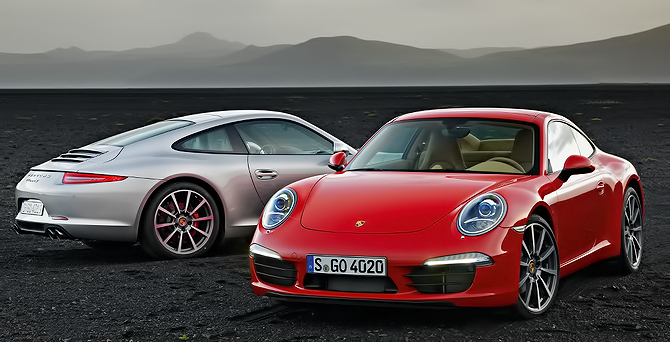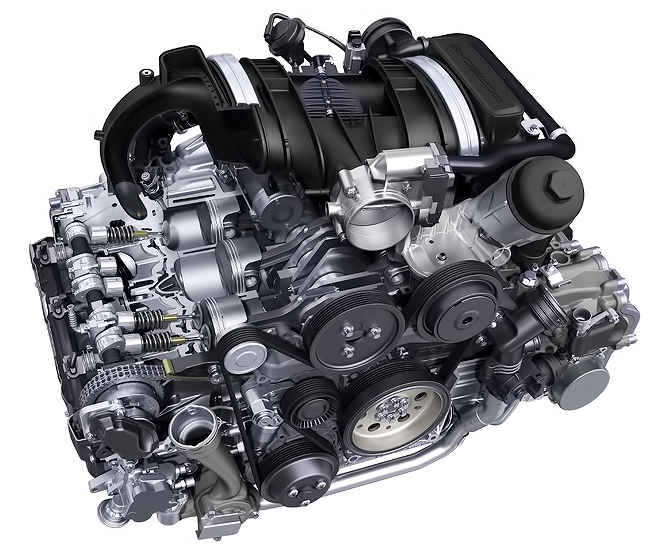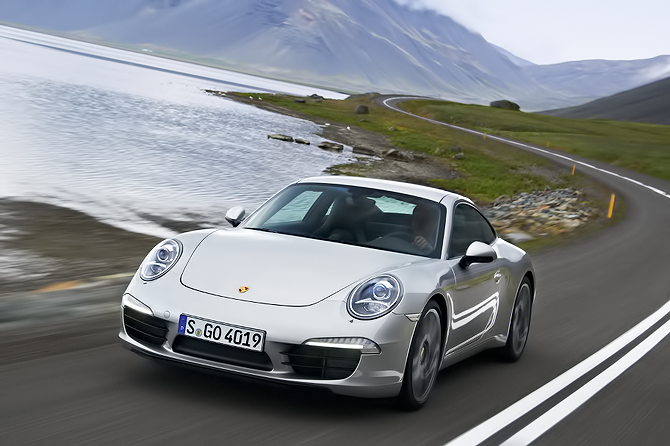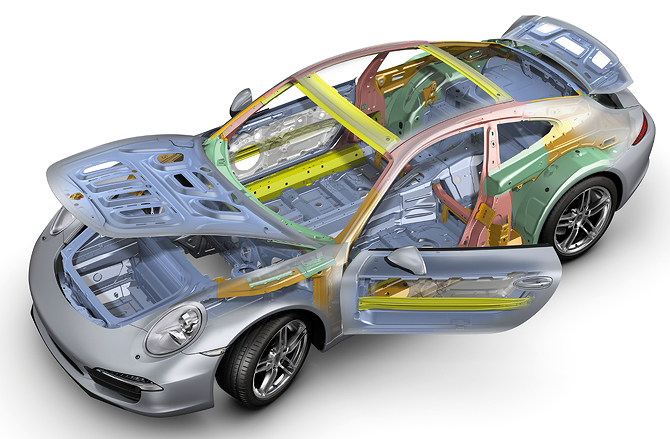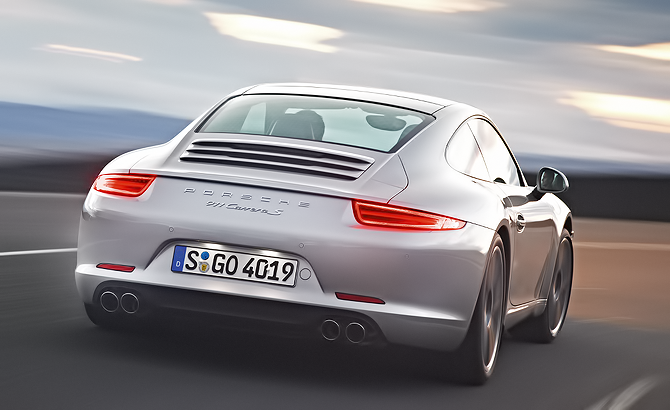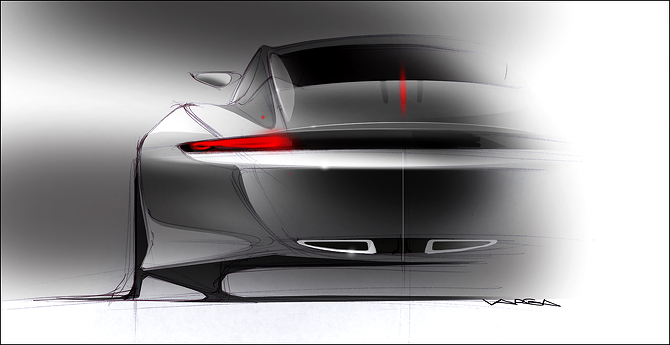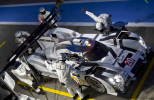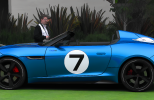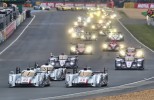
Porsche 911 Carrera S Video Review
Porsche 911 Carrera S
Published by Autobahn Buzz (Porsche 911 Carrera S)
The brand-new generation is making its debut in two versions:
Porsche 911 Carrera: 350 hp (257kW) 3.4-litre boxer engine; rear-wheel drive, seven-speed manual transmission, optional seven-speed Porsche-Doppelkupplungsgetriebe (PDK); velocity 0– 100 km/h (0-62 mph) in 4.8 seconds, with PDK in 4.6 seconds (4.4 seconds with Sport Chrono Package); top speed 289 km/h (179.6 mph), with PDK 287 km/h (178.3 miles per hour); fuel consumption (NEDC) 9.0 l/100 km, CO2 212 g/km; along with PDK 8.2 l/100 km; CO2 194 g/km.
Porsche 911 Carrera S: 400 hp (294 ) 3.8-litre fighter engine; rear-wheel drive, seven-speed manual transmission, optional seven-speed Porsche-Doppelkupplungsgetriebe (PDK); velocity 0– 100 km/h (0-62 mph) in 4.5 seconds, with PDK in 4.3 seconds (4.1 seconds with Sport Chrono Package); top speed 304 km/h (188.9 mph), with PDK 302 km/h (187.7 mph); fuel consumption (NEDC) 9.5 l/100 km; CO2 224 g/km; along with PDK 8.7 l/100 km; CO2 205 g/km.
Along with its totally revamped suspension featuring various redeveloped elements, the Porsche 911 Carrera S increases the driving dynamics bar yet another degree for the German Autobahn. One of the most outstanding reasons for the performance gain: the brand-new 911 Carrera along with optimal flashy equipment can easily lap the Nürburgring’s Nordschleife in seven minutes and 40 seconds.
The Porsche 911 Carrera S sets new records in Porsche Intelligent Performance. The ingenious aluminum-steel lightweight body, incorporated with a plethora of brand-new parts and functions, benefits efficiency and driving dynamics in equal measure.
The brand-new Porsche 911 Carrera S is the first passenger vehicle in the world to include a seven-speed manual transmission as standard. It is based on the component of the optional seven-speed Doppelkupplungsgetriebe (PDK). The close ratio of the initial 6 speeds affords the driver exceptional acceleration capability, along with the seventh gear’s quasi overdrive supplying additional range via improved fuel economy.
The Porsche 911 Carrera S is the very first sports car that Porsche has actually prepared with an auto start/stop feature. The system can easily save around 0.6 liters of petrol every 100 kilometers based on the New European Driving Cycle (NEDC). The auto stop/start function is used with both the PDK and hand-operated transmission as standard. The joint thermal administration unit for the engine and transmission and on-board electrical system lower the brand-new Porsche 911 Carrera S generation’s fuel consumption by an additional 0.35 l/100 km. As the new air conditioning design ignores ventilation openings in the underbody, it likewise improves aerodynamic advantages, which are of benefit to performance.
The coasting function, making its very first appearance in a sports car with the optional PDK transmission, can easily save around one liter of fuel for each 100 kilometers in everyday driving. If the motorist takes his/her foot off the accelerator, depending on the driving scenario, the engine is released from the transmission. Specifically at higher rates, this function enables better fuel economy.
In the 911 Carrera, optimized fuel consumption is achieved by Porsche-style downsizing: the 3.4-litre engine delivers more power from a smaller sized engine displacement than its predecessor with a displacement of 3.6 liters. That implies the 911 Carrera along with PDK is the first Porsche sports car to make it below the 200 g/km CO2 emissions threshold.
Along with the new electro-mechanical power steering, the Porsche designers managed to create an automobile that blends Porsche’s trademark preciseness while yielding superlative road holding and handling capabilities for the lucky Porsche driver/owner. As the system only calls for electric when steering, the electro-mechanical system saves at the very least 0.1 liters of fuel for every 100 kilometers in contrast with a conventional hydraulic steering system.
The new active Porsche Dynamic Chassis Control (PDCC), available for the Carrera S as an optional extra, expands the road holding limits yet once more by a sizable margin. PDCC raises the bar in terms of driving dynamics, something that’s no small feat in a Porsche.
Making its launch in the 911 Carrera S, Porsche Torque Vectoring (PTV) is included as standard. PTV ensures even much better monitoring and tracking stability, in addition to lower sensitiveness to load adjustments. Combined with the seven-speed manual transmission, the system consists of a technical rear differential lock and changeable torque circulation to the rear wheels. In cars equipped along with the Doppelkupplungsgetriebe (PDK), the even higher-performance PTV Plus includes the electronically controlled, fully changeable, rear differential lock. PTV or PTV Plus further enhances agility and steering preciseness through careful stopping mediation used to the inside rear wheel. PTV and PTV Plus are additionally offered for the 911 Carrera as an optional extra.
These innovations include other improvements to the 911 Carrera. Among the most pronounced factors of distinction is the 100 millimeter longer wheelbase. The body of the 911 Carrera is only 56 millimeters longer, with the overhangs beyond the front and rear wheels being shortened by 32 millimeters at the front and twelve millimeters at the back. The Carrera’s roof line is around seven millimeters lower compared to that of its precursor and around six millimeters for the Carrera S. Interior headroom continues to be practically unmodified. For Coupe’s that include a sunroof, which for the first time is of the electric slide/tilt type, headroom has even boosted by 15 millimeters. Along with a general length of under 4.5 meters and an unchanged maximum width of approximately 1.8 meters, the 911 Carrera continues to be the most compact sports car among its competitors.
The 911 Carrera’s stylistic evolution appears from every angle. Viewed from the side, brand-new styling, larger alloy tires and the more convex windshield help to convey a jauntier, much more coupe-like personality. A wider front end, new standard Bi-Xenon headlights and bigger edge air intakes comprise the 911 Carrera’s nose. The bigger, variably extending rear diffuser stresses the new 911 Carrera designs’ more aggressive nature. In addition to other aerodynamic optimizations, it achieves less lift while retaining a just as excellent coefficient of drag. Revamped, narrower LED technology rear lights complete the rear profile.
To complement the 911 Carrera’s new exterior, the Porsche developers created an indoor, the architecture of which takes its hint from the Porsche Carrera GT. The driver is now much more carefully incorporated along with the cockpit thanks to the center console rising to the front along with the high-mounted gear lever or gear selector found particularly close to the steering wheel in normal motorsport style. The most essential feature and settings buttons for operating the vehicle are grouped in logical clusters on the center console. Centrally located in the entirely redeveloped dashboard, a larger seven-inch touch display is used to regulate a wealthy range of features. Naturally, the timeless, developed Porsche gauges, such as the fivc round instruments along with the centrally situated rev counter and the ignition lock to the left of the wheel are found in the brand-new model. Additionally, both driver and front guest have seats with electric four-way adjustments. Optional sports seat variations provide either 14 or 18-way adjustment depending upon which seat is chosen.

